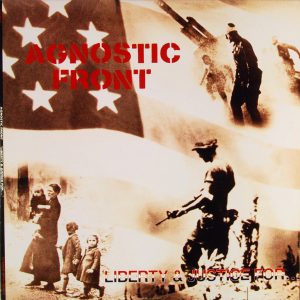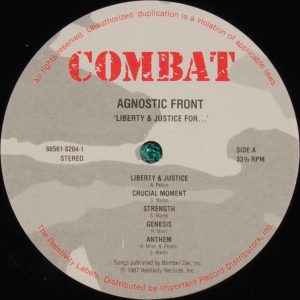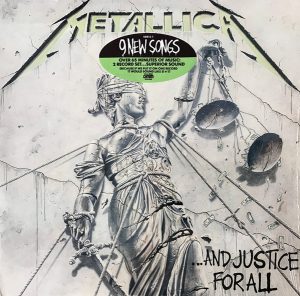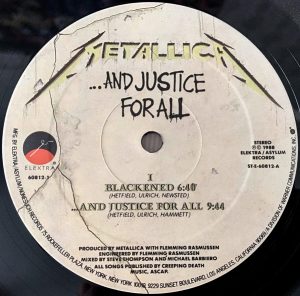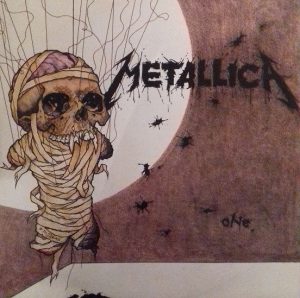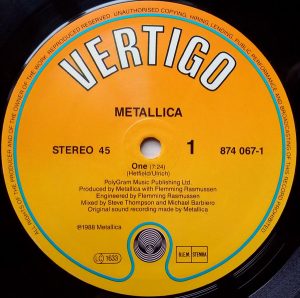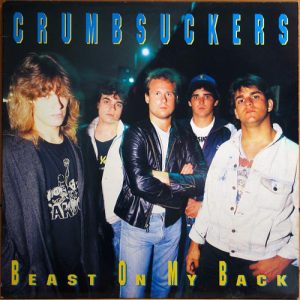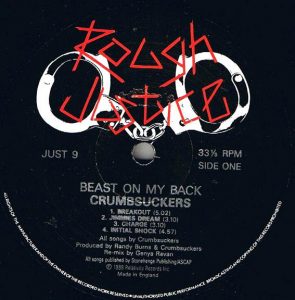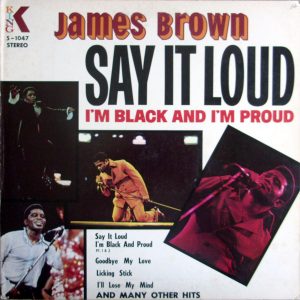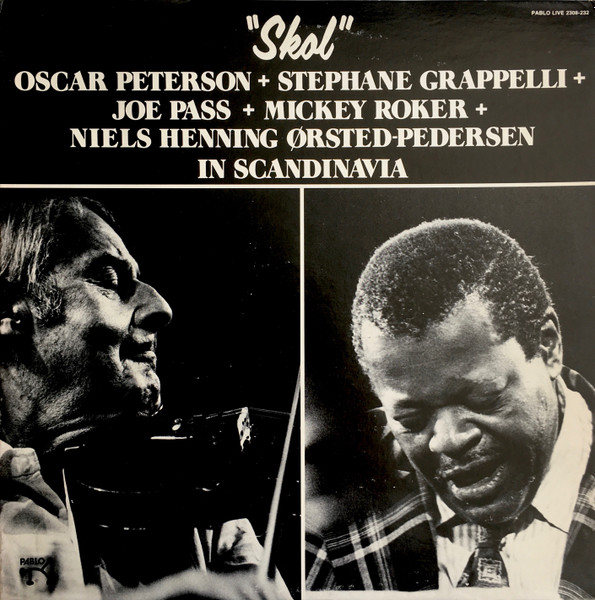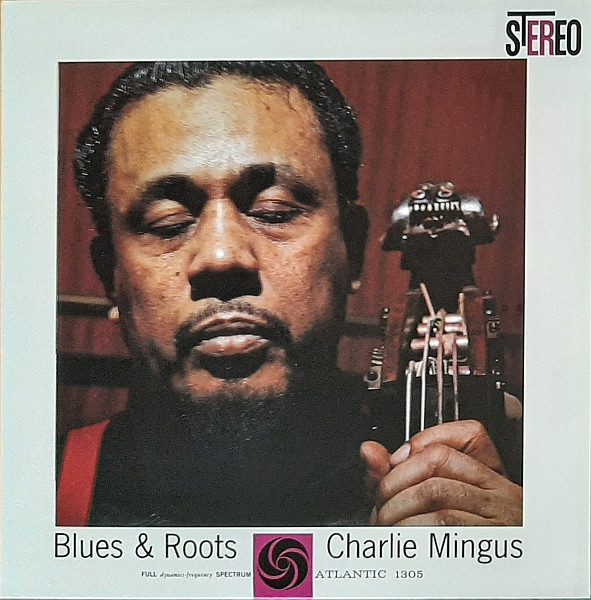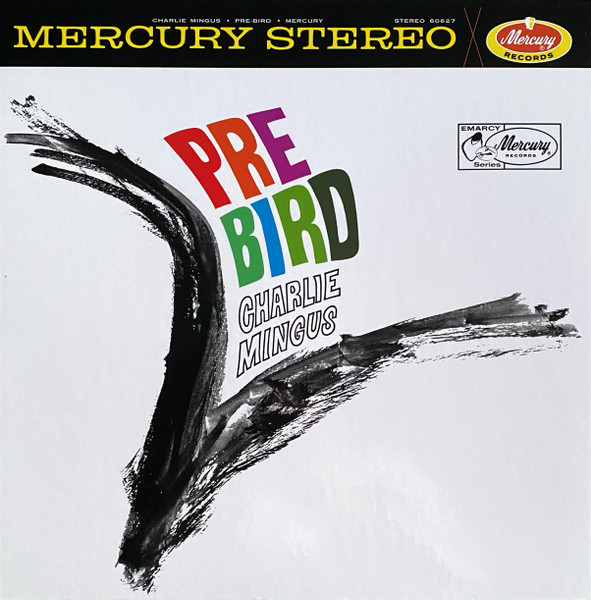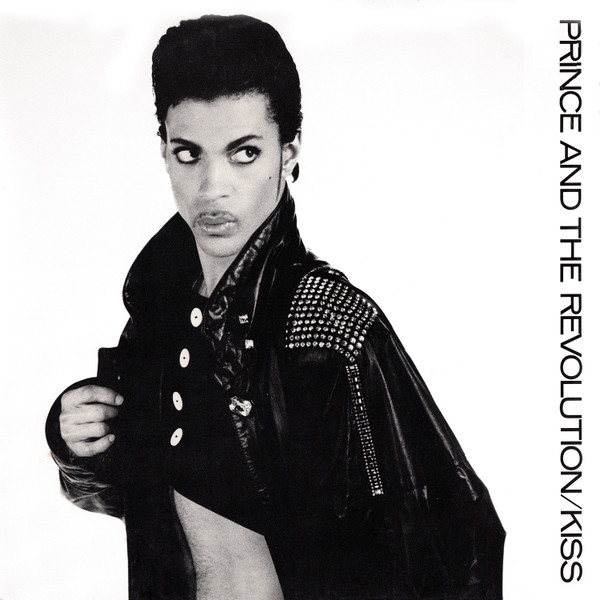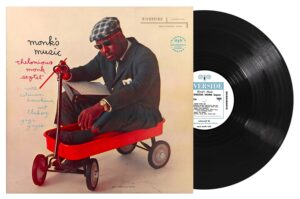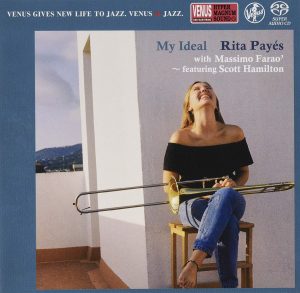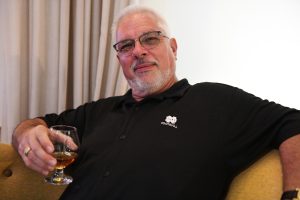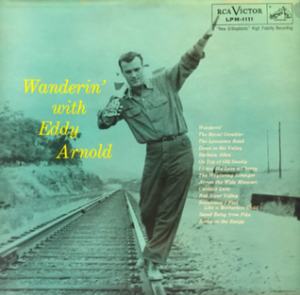This is an ongoing project by Claude Lemaire of Soundevaluations
"I can't breathe"
Eric Garner, George Floyd
"We can't breathe"
People all over the World
"What's Going On"
Marvin Gaye
"Why Can't We Live Together"
Timmy Thomas
"Love Is the Message"
MFSB (Gamble & Huff)
"RESPECT"
Otis Redding, Aretha Franklin
"Get up, stand up, stand up for your rights!" "Get up, stand up, dont' give up the fight!"
Bob Marley and The Wailers
"Say It Loud – I'm Black and I'm Proud"
James Brown
"People movin' out, people movin' in. Why, because of the color of their skin" "Vote for me and I'll set you free"... "Ball of Confusion that's what the world is today"
The Temptations (Norman Whitfield, Barrett Strong)
"Take the Power Back"
Rage Against the Machine
"The Revolution Will Not Be Televised"
Gil Scott-Heron
"One Nation Under a Groove"
Funkadelic (George Clinton)
"I pledge allegiance to the Flag of the United States of America, and to the Republic for which it stands, one Nation under God, indivisible"
141. Agnostic Front, Liberty and Justice For.... Combat – 88561-8204-1 (1987), 33 1/3 rpm. Genre: crossover thrash, New York hardcore, speed metal.
The 1970s saw the emergence of two important distinct off-center rock branches that often pitted die hard music fans against each other: heavy metal and punk rock. Nothing surprising given the wide gulf existing between Sabbath, Purple and Priest on one hand, and The Stooges, Ramones, and Pistols on the other—the first striving for heaviness and virtuosity, the second preferring rawness and aggressiveness. Yet by the early to mid-1980s worlds started to collide. In fact, cross-pollination had already taken place on a very limited basis before the turn of the decade with Motörhead's self-titled debut in August 1977 [Chiswick Records WIK 2] spearheading speed metal in its infancy—though one can make a strong case for Deep Purple's "Speed King" from Deep Purple in Rock [Harvest SHVL 777] in June 1970 as the earliest example of pushing the metronome further up the ladder. That said it is truly around 1986 when bands such as Slayer, Voïvod, Anthrax, and Agnostic Front upped the ante in terms of aggression, adrenaline, and speed which catapulted this crossover from hardcore punk into thrash metal and vice versa. Straight out of New York City, Agnostic were at the forefront of this foray into forbidden territory. Testing the waters with their self-released debut 7-inch EP United Blood e.p. [AF 001] in 1983, followed by Victim in Pain [Rat Cage Records MOTR 29] in 1984, it's really with Cause for Alarm [Combat Core CC 8049] in 1986 that got the musical formula fairly right. I discovered the five member band with their third album Liberty and Justice For... not long after its release in 1987, and it remains my favorite of the lot—and the subgenre—both musically and sonically. Comprising eleven songs lasting between 1 and 3 minutes, it starts with the title track that samples a group of schoolchildren reciting the Pledge of Allegiance right up to "indivisible" upon which drummer Will Shepler's double-kick launches us from 0-60 in a flash, followed by Vinnie Stigma's guitar, and Roger Milet's distinctive vocals, all unleashing hell in front of our eyes and ears—the latter's style may not be everybody's cup of tea. Steve Martin's wild and crazy lead guitar is electrifying and on fire while Alan Peters' bass is boisterous in density. The resulting group assault, is terrifyingly brutal, as being rammed in a brick wall by a locomotive! Norman Dunn produced the album, and there are no weak tracks on this rather short span 26 minute LP. Engineer Alex Perialas assisted by Ron Hunter did a powerfully stunning job at his own Pyramid Sound Recording Studios in Ithaca, New York. Tom Coyne mastered and cut it at Frankford Wayne Labs in New York, NY. The drumkit is the backbone of the recording, and is superbly captured and mixed with deep impact especially from the floor toms resonating in the room resulting in a big wide drum sound driving the speedy and—at times—groovy rhythm. The two guitars are at an ideal level to feel the aggressive energy of the performance without ripping your ears out—as many metal recordings unfortunately are.
142. Metallica, ...And Justice For All. Elektra – 60812-1 (1988), (2x33 1/3 rpm). Genre: speed metal, thrash metal, heavy metal, progressive metal.
Sharing several similarities with the previous album title, once again the Pledge of Allegiance is thrust into the spotlight with less than a year separating these two releases. Both bands started around 1980-81 and had their first release in 1983—starting with Kill 'Em All in July, followed by Ride the Lightning exactly one year later, and Master of Puppets [Blackened Recordings BLCKND005R-1] in March 1986. Many consider the latter LP as Metallica's masterpiece and with good reason, for it masterfully melded the thrash and brute force of their previous material with a level of sophistication seldom heard in the speed subgenre. I admire it as well but on a strictly sonic basis, have some reservations to include it in this particular List—not certain it crosses the threshold I set forth at its inception. On the other hand, their fourth release ...And Justice For All in September 1988 does so and remains as worthy as Puppets—it is like choosing between Revolver and Sgt. Pepper, both have equal merit but are different. Musically it shies from some of the rough edges of their earlier work, prioritizing more controlled complex compositions espousing longer odd meter progressive structures. As such, it can feel a bit mechanical or contrived. The nine tracks are divided onto four sides. I'll never forget the first time I put it on the platter and listened to the long slow fade in—created by the warm harmonically rich distorted guitars—forming the intro to "Blackened" before the drums and the rest of the band bolster in with militaresque precision and the overly dry snare rapidly marking the time. Instantly we realize the Los Angeles quartet—now with bassist Jason Newsted replacing Cliff Burton who died two years prior—transform themselves, and demonstrate who the Big Boys really are. The title track follows as one of the two longest tracks of the set nearing the ten minute mark–the other being the nearly instrumental "To Live Is to Die" on side D which integrates classical string guitar, and was a tribute honoring Burton. Side B is simply outstanding opening with "Eye of the Beholder" leading up to their metal masterpiece "One"—see the next entry. Side C is close behind with three great tracks: the frantic-paced "The Shortest Straw"; the heavy "Harvester of Sorrow" that slowly pounds a rhythm like the Roman army advancing in the streets; and "The Frayed Ends of Sanity" securing a spot also. This is the third album produced by the band with Danish producer/engineer Flemming Rasmussen, whose first objective was to find the right guitar sound. He along with engineer Toby 'Rage' Wright recorded the band members separately in a live room at One On One Studios in North Hollywood, California on three sets of reels—drums, bass & guitars, and other parts. Steve Thompson and Michael Barbiero, assisted by engineer George Cowan mixed the album at Bearsville Studios in New York, extremely dry, direct, and sterile—which Rasmussen disliked—but I find makes it stand out from most other metals of that era, and provides precision for the musical and rhythmic complexity involved. Bob Ludwig mastered and DMM cut it at Masterdisk in New York. Surprisingly it doesn't sound at all like the typical DMM cuts which normally tend to be overly bright or very detailed; instead it is quite the contrary with rather chunky hefty lows and descending tonal balance which suits the style just fine. There is nothing very natural in the sound—in fact the exact opposite of an Albini recording—with almost synthetic sounding dry drums, but the overall envelope is thick, dense, tube warmly, and pleasant to the ears. In that sense it is best viewed as a canvas painting rather than a photograph. The rhythm and lead guitars have a distinctive density that at that moment in time set Metallica apart and ahead of other metal bands that would eventually emulate them such as Pantera, and Sacred Reich. Regarding Newsted's bass, it is well documented that it is close to inaudible following Hetfield and Ulrich's strict orders to the engineers to bury it in the mix. Pressed by Specialty Records Corporation in Olyphant, PA.
143. Metallica, "One"/"For Whom the Bell Tolls (Live)"+"Welcome Home (Sanitarium) (Live)". Vertigo – 874 067-1, METAL 512 (Euro-Ger.) (1989), 12", 45 rpm. Genre: speed metal, thrash metal, heavy metal, progressive metal.
Among the band's repertoire, "One" must surely be their signature song. Their first top 40 hit single, it remains an important fixture of their live shows, and even won a Grammy for Best Metal Performance in 1990. Extracted from 1988's ...And Justice For All—see the preceding selection—it was the band's first song to have a music video created just for it. Directed by Bill Pope and Michael Salomon, it is beautifully shot in black and white interspersed with scenes sourced from Dalton Trumbo's 1971 anti-war film Johnny Got His Gun along with the band playing live to the song in a warehouse. I never was a video buff—never cared for MTV nor its Canadian counterpart MuchMusic—but I remember vividly the first time I viewed that long artistic video and was mesmerized by its originality, creativity, and the powerful visual message it left behind, only elevating my deep appreciation of the track. It is in my opinion a perfect metal song that has aged quite well. The intro features war like sound effects with helicopter in the background, followed by Hetfield's delicate clean tone guitar establishing the main riff, joined a few measures further by Hammet's clean but warmer ESP elaborating a sparse melody–simple in the beginning, before building up more intricate harmonies overlapping with time in a higher register solo. Meanwhile Ulrich makes his entry a few beats before the bar, developing a 3/4 time signature groove mainly relying on the kick for the first run, then adding a mixture of syncopated cymbals, snare, and toms to increase the tension. What is interesting with Hetfield's vocal is the juxtaposition of his melancholic singing style during the softer passages with the unleashing of anger in unison with the aggressive distorted guitar work, and more forceful drumming. Things start to get pretty heavy and noisy just past the halfway mark; thirty seconds afterwards there is a major shift in the rhythm pattern transitioning to 4/4 where the double kick dribbling takes command of the situation, then the guitars get in on the action riffing in unison, ending up in a synchronized staccato machine gun guitar, snare, and double kick discharge of artillery. The last minute and a half is the grand finale featuring an exciting classic dual guitar duel between Hetfield and Hammett, the latter tapping in baroque inspired arpeggios along the neck, alternating to 2/4 at its fevered climax. Of course Metallica did not invent this song formula of starting smooth and ending raucously—as far back as Led Zeppelin's "Dazed and Confused" from their self-titled 1969 debut [Atlantic 588171] and "Stairway to Heaven" from their fourth untitled LP [Atlantic Classic Records SD 7208] two years later, not forgetting Deep Purple's "Child in Time" from 1970's Deep Purple in Rock [Harvest SHVL 777] in between—but they seem to have mastered it like nobody else. The lacquer for this 45 rpm 12-inch single was cut at PDO, Germany. It is the exact same version than found on the album. It sounds close enough to the latter but a bit superior in the top end extension, dynamics, and double kick articulation—not surprising given the higher speed cutting and having only one track per side instead of the album's two track per side at 33 1/3 rpm. Sonically it is tonally well balanced, leaps beyond the average metal release, and is demo worthy on the appropriate audio rig. I do not have the original 1988 US promo 12-inch 33 1/3 rpm pressing [Elektra ED5349] mastered at Sheffield Lab Matrix in Santa Monica, CA and pressed by Allied Record Company in Los Angeles, CA; nor the US promo mastered at Specialty Records Corporation in Olyphant, PA, lacquer cut at Masterdisk in New York, and pressed at Specialty Records Corporation; nor the 1988 UK promo 12-inch 45 rpm [Vertigo METDJ 512] lacquer cut by Jack Adams, and pressed at EMI Records in Hayes, Middlesex, London, UK to compare with. Side B sports two live versions of fan favorites from their two previous albums, and are interesting as an alternative—though not replacements—to the original studio versions.
144. Crumbsuckers, Beast On My Back. Combat – 88561-8208-1, Rough Justice – JUST 9 (UK) (1988), 33 1/3 rpm. Genre: crossover thrash, speed metal, New York hardcore, prog metal.
Hailing from Baldwin, Long Island, New York, Combat Core's Crumbsuckers came out with its first of only two albums in 1986 with Life of Dreams [Combat Core 88561-8090-1] combining brutal thrash and hardcore into sixteen short songs mainly lasting between 1 and 3 minutes. Though exciting with its thrashy punk riffs and punchy rhythms, I prefer their following release Beast On My Back for exploring more progressive complex song structures along with superior sound. In effect, side A's intro to "Breakout" features keyboards prominently taking lead in a progressive-symphonic metal flavor before the band comes in with tight staccato-style precision, abruptly shifting to an aggressively-vocal-riff-based music style. Songs such as "Remembering Tomorrow," with its acoustic-chorus guitar intro, recall Rush's 1970s prog period–2112 [Mercury SRM-1-1079], A Farewell to Kings [Anthem ANR-1-1010], Hemispheres [Anthem SANR-1-1015], and "Natural Science" from Permanent Waves [MoFi MFSL 1-302] come to mind while others remind me of "Beyond the Black" from Metal Church's debut album in July 1984 [Ground Zero Records GZ002] and certain Slayer tracks. Produced by Randy Burns in conjunction with the band, the nine tracks fall more within normal time lengths from 3 to 5 minutes. Engineer Casey McMackin recorded the basic tracks at Eldorado Recording Studios with additional recording at Salty Dog Studios, both situated in Los Angeles along with Track Record in North Hollywood, CA. Engineer David Cook assisted by Harvey Sorgen, and Martin S. Kunitz mixed it at MadDog Studios in Venice, CA with Genya Ravan doing the final mix at Dreamland Recording Studios in Bearsville, New York. Mastered and cut by Tom Coyne at Frankford Wayne Labs in New York, NY for the original US Combat pressing. I did not have the latter so I could not compare with my 1988 UK release on Rough Justice pressed at Orlake in Dagenham, Essex, East London. Based on my UK pressing, the sound is generally excellent and way above the average for this music genre with moderate compression, fine wide tonal balance especially in the low mids—which are all too often missing in action in speed metal. I would have preferred a bit less simulated room ambience reverb in the mix for a dryer intimate presentation.
145. James Brown, Say It Loud – I'm Black and I'm Proud. King Records – 5-1047 (1969), 33 1/3 rpm. Genre: funk, soul.
By the late-1960s, the "Godfather of Soul" had reinvented himself as the Founding Father of Funk. Rewinding to 1964, there's no doubt he was "Out of Sight," proving a year later, he ain't no drag with "Papa's Got a Brand New Bag," and breaking out in a "Cold Sweat" in 1967, James Brown slowly but surely started introducing new ingredients into his soul food recipe. Harvesting hard bop seeds alongside childhood memories of marching bands, with call and response shouts echoing from the Southern Black church, churning as far back to the work songs from the cotton field plantations of slavery; he diluted the melodic in favor of the rhythmic and harmonic, thus creating this harder repetitive syncopated style rooted in rhythm and blues and African heritage. Following the assassination of Martin Luther King, Jr. in Memphis, Tennessee on April 4, 1968, Brown gave a free televised concert the day after at the Boston Garden in Massachusetts to quell the massive protests and riots in the streets. In the hope of keeping them at home glued to the their TV sets—and unbeknownst to him initially—the mayor ordered several rebroadcasts of the show on the public television station. Feeling the heat from certain black activists in the community for not speaking out loud enough against the racial and social injustices ravaging the country, he recorded and released the 2-part single "Say It Loud—I'm Black and I'm Proud" in August of the same year—considered by some as an anthem to the Black Power movement. Strangely it appears not only once but on two different subsequent albums—A Soulful Christmas [King Records KS 1040] in late 1968, and the present entry in March 1969. All three releases seem identical, with the albums splitting the two parts with fade outs and fade ins from the original single, cut on separate tracks instead of combining them on a single track without any interruption, which would have been much preferable. But this was a common occurence with Brown's material well into the 1970s as if the single format maintained its precedence to the LP. Saxophonist, composer, and arranger Alfred "Pee Wee" Ellis co-wrote the title track. The "call and response" between Brown on lead and the unknown children's chorus is both highly original, controversial, and efficient in the context of enciting kids into a militaresque fashion. Trombonist Fred Wesley wields his first appearance with the band on this track, alongside tenor saxophonist Maceo Parker, funky drummer Clyde Stubblefield, bassist "Sweet Charles" Sherell, "chicken scratch" guitarist Jimmy Nolan, and tenor and baritone saxophonist St. Clair Pinckney make up the bulk of the James Brown Orchestra—the precursor to the J.B.'s. of the 1970s. The rest of the album has no other hits and is only mildly interesting. The only engineering credit listed on the back of the jacket is for engineer Dave Harrison, later known for his big audio consoles. The sound is clean and crisp in the mids which predominate slightly, with the lows and extreme highs a bit withdrawn, which was pretty much the norm during that period. Thankfully there is not much reverb, providing us with a dry close up presence nicely panned for a wide soundstage and no hole in the middle. Most instruments are easy to follow, with the brass and guitar especially tone-worthy. Of course I would have wished for a bit more kick and bass modulation like in his 1970s output, but it also gives it a bit of a vintage era touch. The rigid vinyl is pressed by Royal Plastics Corporation in Cincinnati, Ohio, which served King Records stemming from the same city.
For more from Claude Lemaire go to his blog...
http://soundevaluations.blogspot.ca/




